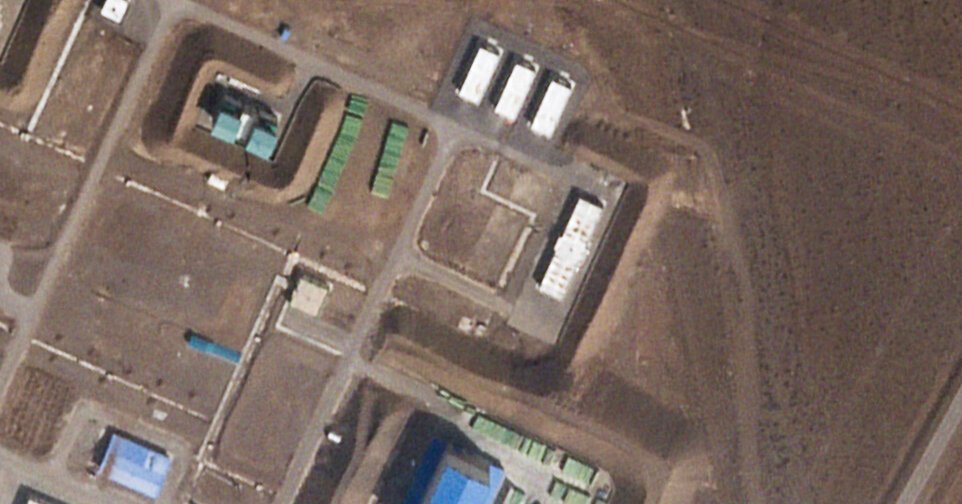New satellite images suggest that the Israeli military's attack on Iran on Saturday hit a range of key military facilities, including a major missile production facility.
The strikes destroyed air defense systems installed to protect several important oil and petrochemical refineries, as well as systems protecting large gas fields and a major port in southern Iran. According to Iran’s Defense Air Force, Israel also attacked a military base in Tehran province.
Satellite images taken by Planet Labs in March and Tuesday show the Shahrood Space Center in Semnan province, home to Iran’s powerful Islamic Revolutionary Guard Corps.
Fabian Hinz, a researcher at the International Institute for Strategic Studies who has been tracking the site since 2017, said the site could be used in space technology, but was also used to make solid-fuel rocket motors, which are also commonly used in ballistic missiles. said that it was done. .
American and Israeli officials said the attack specifically targeted Iran’s ability to make solid propellant for missiles. Prime Minister Benjamin Netanyahu said in a speech on Sunday that Israel had severely attacked Iran’s missile production capabilities and had achieved all of its goals.
Hintz said he has “high confidence” that the Shahrood facility is being used to mass produce intermediate-range ballistic missiles that can be used to target Israel. He compared images from March and Tuesday, saying Israel “bombed a central building associated with the production of solid-fuel rockets.”
In recent years, the Revolutionary Guards has developed a missile development program separate from that of the Iranian military, Hintz said. Although the Shahrood facility contains infrastructure for the space program, the solid propellant facility is “inherently versatile” and can easily be adapted to make missiles, he said.
He said the March images showed signs of missile production, including the presence of wooden boxes for ballistic missile motors and a number of storage areas. “The space program doesn’t need that much storage,” Hintz said.
Joseph Bermudez, a senior image analysis fellow at the Center for Strategic and International Studies in Washington, also said the facility’s design suggests it was used to make solid-fuel rockets for military use.
Bermudez noted that the building in the center of the image is surrounded by a large earthwork, and similar smaller embankments and bunkers have probably been built around nearby buildings to absorb the blast.
Solid propellants are useful for weapons systems because they can be stored for long periods of time and rockets using solid propellants can be launched more quickly than rockets that rely on liquid propellants, Bermudez said.
Hintz said Israel’s strikes against Iran were limited in scope but “very effective.” He said they appear to have targeted critical points in the production process with the aim of “bringing Iran’s solid-propelled ballistic missile infrastructure out of production.”
Initial reports suggested that three of Iran’s four missile manufacturing plants were attacked on Saturday, and while the extent of the damage was not yet clear, Hintz called the attack “serious.” He stated that he had confirmed circumstances that led him to believe that this was the case.
Earlier this month, Iran responded to the assassination of Hamas leader Ismail Haniyeh in Tehran in July, which was widely attributed to Israel, and the killing of Hezbollah leader Hassan Nasrallah in an Israeli airstrike near Beirut later that year. attacked Israel. September. The airstrike also killed an Iranian commander.
Iran’s supreme leader Ayatollah Khamenei has the authority to order attacks on Israel. On Sunday, in his first public comments on the Israeli attack, he said its impact “should neither be magnified nor minimized,” Iranian state media reported.
The statement suggested that new attacks against Israel could be carried out. Indeed, Israel was prepared for that.
Israeli Army Chief of Staff Lt. Gen. Helj Halevi said on Tuesday that if Iran attacks again, “we will see again how to reach Iran and launch a powerful attack with capabilities that we didn’t even use this time.” . , very enthusiastic both in ability and location. ”
“This is not over,” he said. “We’re still in the thick of it.”
David E. Sanger, Farnaz Fassihi and Cassandra Vinograd contributed reporting.

